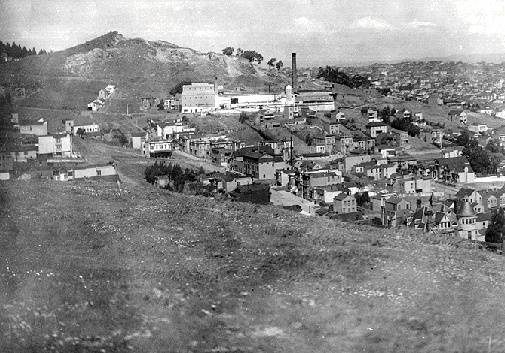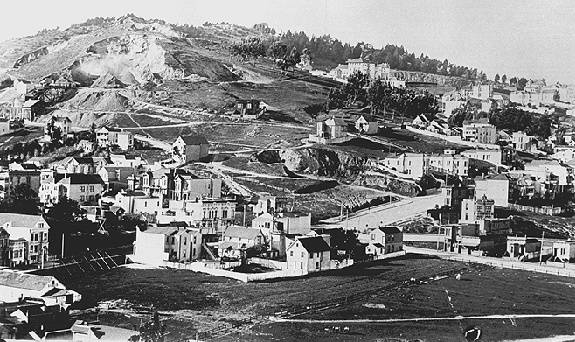Corona Heights: Difference between revisions
No edit summary |
No edit summary |
||
| Line 5: | Line 5: | ||
[[Image:ecology1$corona-hts-quarry-1899.jpg]] | [[Image:ecology1$corona-hts-quarry-1899.jpg]] | ||
'''By 1899, they had removed tons of rock and produced tens of thousands of bricks, creating the blasted landscape at left (seen from the hill between Eureka and Noe Valleys just west of Dolores Park). The Gray Brothers also quarried [[Telegraph Hill Quarry |Telegraph Hill]] and [[30th and Castro South |Billy Goat Hill]] above Noe Valley.''' | '''By 1899, they had removed tons of rock and produced tens of thousands of bricks, creating the blasted landscape at left (seen from the hill between Eureka and Noe Valleys just west of Dolores Park). The Gray Brothers also quarried [[Telegraph Hill Quarry |Telegraph Hill]] and [[30th and Castro South |Billy Goat Hill]] above Noe Valley.''' ''Photo: Greg Gaar collection, San Francisco, CA'' | ||
''Photo: Greg Gaar collection, San Francisco, CA'' | |||
[[Castro1$corona-heights-quarry$1965-view itm.html | 1965 view towards quarry site]] | |||
[[Saving Telegraph Hill 1890-1918 | Prev. Document]] [[The Freeway Revolt | Next Document]] | [[Saving Telegraph Hill 1890-1918 | Prev. Document]] [[The Freeway Revolt | Next Document]] | ||
Revision as of 18:19, 16 July 2008
The Gray Brothers Quarry and brick factory on Corona Heights above bucolic Eureka Valley established in the 1890s. Photo: Greg Gaar collection, San Francisco, CA
By 1899, they had removed tons of rock and produced tens of thousands of bricks, creating the blasted landscape at left (seen from the hill between Eureka and Noe Valleys just west of Dolores Park). The Gray Brothers also quarried Telegraph Hill and Billy Goat Hill above Noe Valley. Photo: Greg Gaar collection, San Francisco, CA


